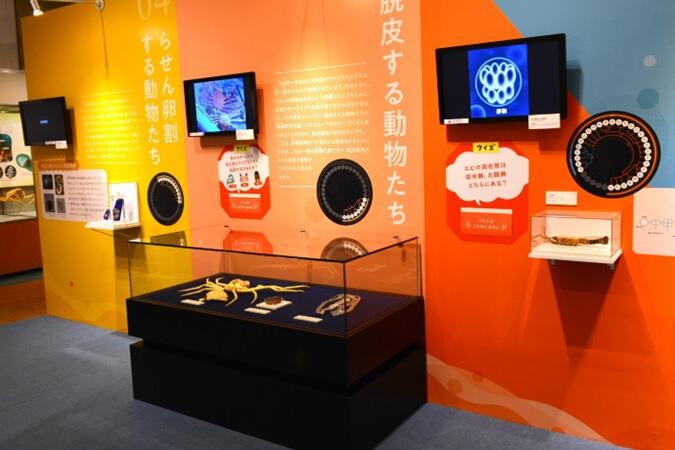The National Museum of Nature and Science (Taito City, Tokyo; Kenichi Shinoda, President) is holding the planned exhibition "Marine Invertebrates - The Unknown Wonderful World" until June 16 in the Exhibition Hall for temporally exhibition and the Central Hall on the first floor of the Japan Gallery. The exhibition introduces the mysterious and fascinating morphology and ecology of marine invertebrates, which have been hitherto unfamiliar to the general public, along with their relationship with humans. Only the admission fee for permanent exhibitions is necessary to view this exhibition.

Provided by the National Museum of Nature and Science
Animals, including humans (metazoans), are classified into 34 phyla, of which only a small percentage are vertebrates, and most are invertebrates. Of the 34 phyla, 31 include marine invertebrates, and all of the species belonging to 18 phyla are marine invertebrates, highlighting how the sea serves as a home for invertebrates. This planned exhibition introduces the world of these unique marine invertebrates. As many marine invertebrates are microscopic in size, microscopes are set up in the exhibition hall so that visitors can compare real marine invertebrates with models.
Supervision was provided by Senior Curator Hiroshi Namikawa and Senior Curator Hironori Komatsu of the Division of Marine Invertebrates and Senior Curator Masanori Nakae of the Division of Vertebrates, the Department of Zoology.
Chapter 1 introduces the diversity of metazoans along with a phylogenetic tree. The diverse and mysterious world of invertebrates that acquired diverse shapes during the process of evolution will be introduced, including microscopic animals with complex morphology and those without organs. Chapter 2 introduces marine invertebrates that cannot be seen on land, focusing on their morphology. Thirty of the animal phyla are classified as bilaterians with bilaterally symmetrical body. These are subdivided into protostomes or deuterostomes, and protostomes are further divided into ecdysozoans or spiralians. This diversity will be explained with specimens and monitors.
Chapter 3 introduces the surprising relationship between marine invertebrates and humans. Examples of people enjoying marine invertebrates as a resource as well as examples of adverse effects and damage from marine invertebrates will be explained.
Chapter 4 explains the significance of understanding marine invertebrates in light of the previous exhibits and introduces the latest research projects being conducted at museums and universities. Although endangered species of land-dwelling creatures draw attention, marine invertebrates are endangered in obscurity. Actual examples of endangered marine invertebrates will be introduced.
Namikawa said, "Marine invertebrates have mysterious ways of life that cannot be understood if we think of them in a human-centered way. I want everyone to feel that marine animals teach us unusual ways of life." The Museum closes on Mondays (Tuesdays if Monday is a national holiday). However, the museum is open on June 10. The admission fee is 630 yen for an adult and university student (free for high school students or younger and those aged 65 years or older).
This article has been translated by JST with permission from The Science News Ltd. (https://sci-news.co.jp/). Unauthorized reproduction of the article and photographs is prohibited.




